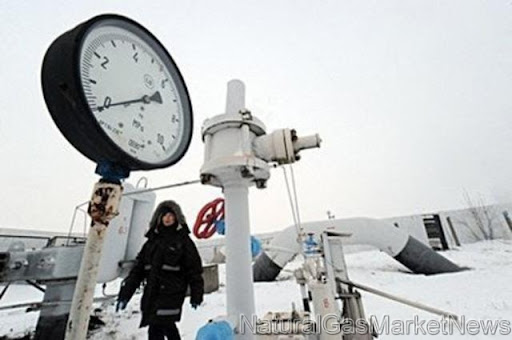Wednesday, 23 March 2011
Natural gas rises to six weeks in New York at temperatures below normal
 Natural gas rose to a maximum of six weeks in New York as the projections show a climate colder than normal in the U.S., increasing demand for heating fuel.
Natural gas rose to a maximum of six weeks in New York as the projections show a climate colder than normal in the U.S., increasing demand for heating fuel.
Oil rose for a third day in four as forecasters including commodities Time Group LLC in Bethesda, Md., said 11 - forecasts of 15 days showed normal to below normal temperatures in the Midwest and temperatures close to normal in the Northeast. The 1 - to 5-day forecast showed a climate colder than normal "in much of the northern tier," according to MDA Federal Inc. 's EarthSat Energy Weather in Rockville, Maryland.
"The cold weather is giving a little boost to gas prices," said Cameron Horwitz, an analyst at Canaccord Houston Genuity. "You are entering the shoulder season and demand picture is fairly flat, so the gas can back up toward $ 4."
Natural gas for April delivery rose 9.3 cents, or 2.2 percent, to $ 4. 254 per million British thermal units on the New York Mercantile Exchange, the highest closing price since Feb. 4. Futures were up 4.3 percent from a year ago.
Prices have broken the resistance level of $ 4.20, a "sign of support that the gas may continue to rise," said Carl Neill, an energy consultant in Risk Management Inc. in Atlanta.
The combination of cold air to the significant drop in southern Canada and an aggressive series of storm systems over the next two weeks means that many areas of the Midwest and the East could see the weather end of the winter season, Matt Rogers, a weather forecaster with the commodity group, said in a note today.
New York Weather
The low temperature in New York on March 25 will be 26 degrees Fahrenheit (-3 degrees Celsius), 12 degrees below normal, according to AccuWeather Inc. in State College, Pennsylvania. Chicago will have a minimum of 28 degrees.
"Unseasonably cold" will spread across the Midwest starting tomorrow and in the Northeast in the last part of the period, according to EarthSat Energy. Snow accumulation is possible in much of the Midwest, Northeast, Mid-Atlantic and parts.
About 52 percent of U.S. households the use of natural gas for heating, according to the Department of Energy.
"One last shot of cold air moving into the Northeast later this week is to support the market," said James R. Crandell, an analyst at Barclays Capital in New York, in a note to clients today. "However, the cold is" too little, too late "to alter significantly the end-season inventory."
LNG cargoes
Gas has increased since 11 March, when Japan's worst earthquake on record resulted in speculation that the country will increase its demand for liquefied natural gas, shifting the burden of the U.S.
"We believe that prices should return once the market determines that balances short-term U.S. must be slightly altered and production trends indicate an image central to the inventory released," said Crandell.
Royal Dutch Shell Plc has diverted six shipments of LNG from Brunei, two loads of Sakhalin in Russia and one from Nigeria, to help replace the capacity of nuclear damage in Japan. More divert LNG cargoes to Japan in the coming weeks, according to De La Rey Venter, head of Shell's global LNG.
LNG imports to the U.S. this year will be the equivalent of 1.15 million cubic feet of natural gas, about 1.7 percent of total gas demand, according to Energy Department estimates made before the earthquake.
Volume of gas futures in electronic trading on the Nymex was 230.538 as of 14:46, compared with three-month average of 301,000. Volume was 301,678 yesterday. The open interest was 900,384 contracts. The three-month average open interest of 875,000.
The change has a delay of a working day in open interest information and full-volume data.

This post was written by: HaMienHoang (admin)
Click on PayPal buttons below to donate money to HaMienHoang:
Follow HaMienHoang on Twitter













0 Responses to “Natural gas rises to six weeks in New York at temperatures below normal”
Post a Comment